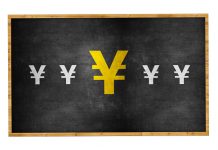Markets
Global core bonds on Monday already showed a loss of momentum following Friday’s post-ISM surge and effectively lost some ground yesterday. Especially in the US, they remain well above Friday’s opening levels though. The start of the US Treasury’s mid-month refinancing operation helps explain some weakness. They eventually kicked off with a well-received $40bn 3-yr Note auction. The real test follows tonight and tomorrow with 10-yr Note and 30-yr Bond auctions. Washington Fed-based Bowman joined the chorus of Fed governors calling for more policy rate increases (a lot more work to do) and vowing to keep rates at their peak for some time. Markets keep fighting the Fed when it comes to this view. US yields recovered 3.3 bps (3-yr) to 9.5 bps (30-yr) on a daily basis. From the ECB camp, governing council member Centeno joined in by arguing that there’s no alternative to raising rates as inflation is still too high despite two straight months of moderation. German yields gained 3.9 bps (2-yr) to 7.8 bps (10-yr) on the day. 10-yr yield spreads vs Germany narrowed by around 2 bps with Belgium (-3 bps), Italy (-4 bps) and Greece (-9 bps) outperforming. Latvia, Italy and Belgium successfully launched new syndicated benchmarks, following Slovenia, Austria, Ireland and Portugal in the first trading week of the year. The Kingdom of Belgium raised €7bn with a new 10y bond (OLO 97 3% June2033). The order book was above €51bn, allowing the debt agency to print at MS +10 bps compared to early guidance of MS +12 bps. The debt agency with this one deal completed over 15% of this year’s OLO funding need (€45bn). Two more syndicated benchmarks and regular monthly OLO auctions should help to raise the remainder of the amount.
Trading in FX majors was extremely muted yesterday. The trade-weighted dollar held just north of the 103 cycle low with EUR/USD moving in an extremely narrow corridor between roughly 1.0720 and 1.0750. The 1.0736 to 1.0806 area provides strong resistance. The test is ongoing with the dollar unable to really fight back. Tomorrow’s US December CPI print will be decisive and suggests more wait-and-see today. Sterling has difficulties to get away from the 0.88-area. Resistance stands at 0.8867/77. Today’s eco calendar is again irrelevant. Apart from above-mentioned supply, speeches by an avalanche of ECB speakers will be interesting, but probably without market impact.
News Headlines
Australian November retail sales and CPI printed stronger than expected this morning. Monthly sales jumped a solid 1.4% M/M from an upwardly revised 0.4% in October (initially -0.2%). Solid growth rates for household goods (2.1%), apparel (6.4%) and sales at department stores (5.4%) suggest that consumer demand is holding up well even as the Reserve Bank of Australia raised its policy rate by a cumulative 300 bps since May last year. November CPI rebounded to 7.4% Y/Y, after easing to 6.9% Y/Y the previous month, with housing (+9.6%), food and non-alcoholic beverages (+9.4%), transport (+9%), furniture, household equipment and services (+8.4%) the biggest contributors. In a monthly perspective, there was an unusually high rise (4.3%) in prices of holiday travel and accommodation. The core trimmed mean measure also rose further to 5.6%, the highest since 2018. The data suggest that the RBA should continue its hiking cycle with an additional 25 bps step at the early February meeting, which currently isn’t fully discounted by markets. The Aussie dollar extends recent gains against the dollar to trade at AUD/USD 0.6915.
Brazilian inflation rose 0.62% M/M in December, bringing the Y/Y measure at 5.79% from 5.9% in November. The decline was slightly more moderate than expected with inflation still above the central bank target of 3.5% with a tolerance band to 5%. Brazilian Y/Y inflation peaked at 12.13% Y/Y in April. The Brazilian central bank (BCB) raised the policy rate to 13.75%. The new government’s stimulative fiscal policy is one of the factors that could slow the disinflationary process. The Brazilian real yesterday rebounded further to USD/BRL 5.20 as higher inflation might force the BCB to keep interest rates higher for longer than expected until now.












